#Cockatoo Dwarf Cichlid
Explore tagged Tumblr posts
Text

the hues of freshwater fish
I've posted these separately a long time ago, but I've never put them here as a set! They were all painted traditionally in gouache - I've got these available as magnets, charms or stickers in my shop! :)
I'm planning some new ones for December~
3K notes
·
View notes
Text
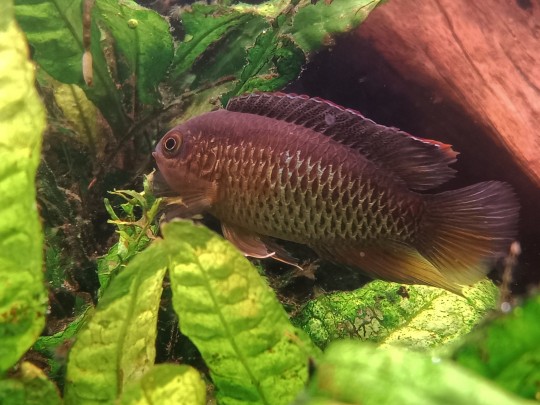
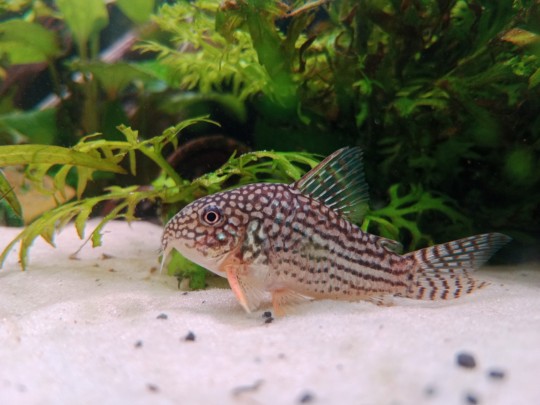
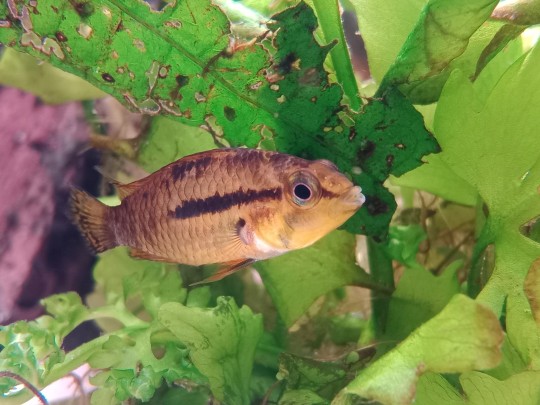
Recent aquarium portraits
Nannacara anomala - Adult male Golden Dwarf Cichlid
Corydoras sterbai
Apistogramma cacatuoides - juvenile female Cockatoo Cichlid
2 notes
·
View notes
Text
My current tanks and stocking, if anyone was curious:
in the 10g community tank
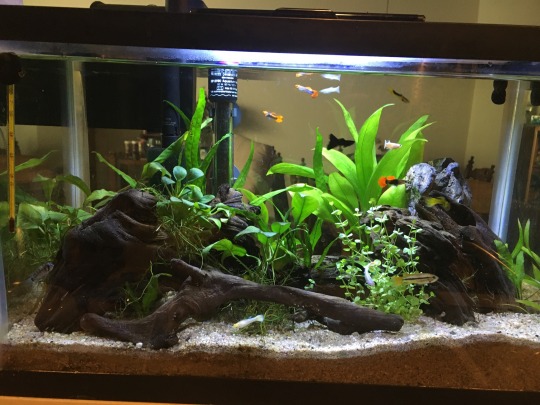
-apistogramma blue steel (Blue Boi)
-apistogramma orange flash (Tangerine)
-endler’s livebearer
-two orange tuxedo guppies
-three platinum moscow guppies
-nerite snail (Swiffer)
in the 55g

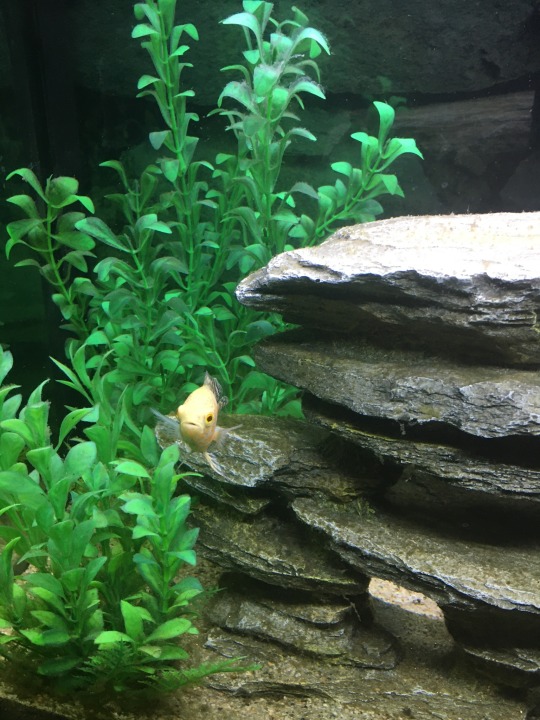
-juvenile tiger oscar (Havoc)
-juvenile lemon oscar (Lemonade)
-orange spot pleco (Spanakopita, not pictured)
#fishblr#fishkeeping#aquarium hobby#community tank#endler’s livebearer#platinum moscow guppy#black moscow guppy#tiger oscar cichlid#lemon oscar#apistogramma orange flash#apistogramma blue steel#cockatoo dwarf cichlid#nobody was curious i just wanted to introduce my children#the fish behind the blog
7 notes
·
View notes
Video
Cockatoo Dwarf Cichlid | Apistogramma cacatuoides
They are miniature eartheaters, especially the males. They spend much of their time digging into the sand, sometimes up to their eyes, looking for food. They’ll pop up with a mouthful of sand, move it around their mouth, and carefully squirt it out through their gills, extracting any food items as they find them.
#cockatoo#dwarf#cichlid#apistogramma cacatuoides#freshwater#underwater#fish tank#fish#tank#cichlidae#Cockatoo Dwarf Cichlid#undersea#nature#aquaria#aquatic#aquascape
85 notes
·
View notes
Photo










All right so I’m 99.9% certain my two apistogrammas are males, especially because the dominant male chases the non-dominant male(?) 24/7 and nips at him, but my LFS thinks it’s a male/female pair. What do you think, two males?
#fishblr#apistogramma#apistogramma cacatuoides#cockatoo apisto#a cacatuoides#freshwater#dwarf cichlids#aquarium adventures
57 notes
·
View notes
Text
Louis and the Aquaria: A Visual Guide 2
This is a little masterpost of all the fish mentioned in Chapter 2 of Louis and the Aquaria, in order of appearance. Since there is a 10-photo limit on each post, it has been split into 2 parts.
Navigation: Part 1 / Part 2
10. Nannostomus beckfordi
Golden pencil fish
South America
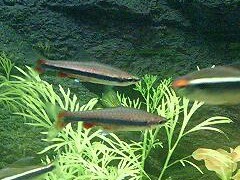
(SelEle-MS, 2007) (source)
11. Apistogramma cacatuoides
Cockatoo dwarf cichlid
South America
[“Triple red” refers to the specific colour variation of the same species]

(Waylah, 2012) (source)
12. Poecilia reticulata
Guppy
Originated from South America, now distributed worldwide
[There are numerous colour variations, this is just one of them]

(Marrabbio2, 2007) (source)
13. Monocirrhus polyacanthus
Amazon leaffish
South America
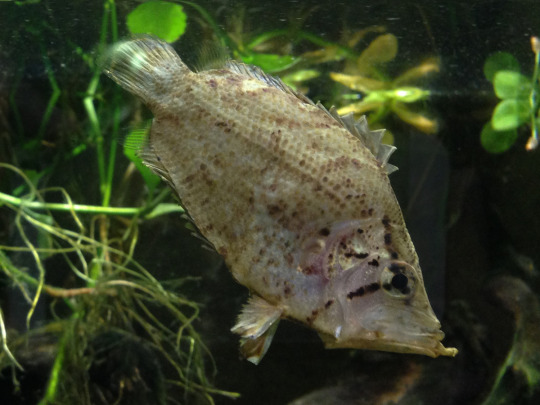
(public domain, source)
14. Tetraodontidae (family)
Pufferfish
[The species pictured here is the dwarf pufferfish, since it was mentioned to be really tiny]

(Till Kresslein, 2007) (source)
15. Pterophyllum (genus)
Freshwater angelfish
[The species pictured here is the altum angelfish, since it best resembles the angelfish in the illustration later in the story]
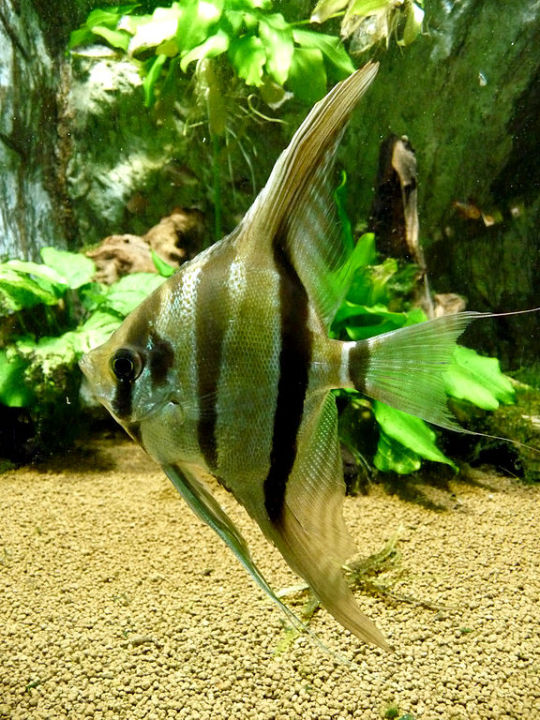
(Citron, 2009) (source)
55 notes
·
View notes
Text

Added some new friends to the tank today! Took me long enough. Lol
We have a young cockatoo dwarf cichlid (Apistogramma cacatuoides), and one of the school of six cardinal tetra seeing their reflection in the back of the tank.
The Apisto is already spunky, and I'll be waiting on a few others to arrive at my LFS. Gonna find out later whether it's male or female!
29 notes
·
View notes
Photo

more mermaid au... dream and his human-turned-mermaid boyfriend.
changed dreams design bc i felt kinda meh abt it, its now sorta loosely based on a cockatoo dwarf cichlid because i used to have a pair of those. George isn’t any fish in particular (since he’s a human-turned-mermaid i thought it’d be kinda appropiate? lol)
#dream#georgenotfound#dnf#mermaid au#mermaid#merperson#merman#i have never before this au drawn shirtless men help#dreamnotfound
10 notes
·
View notes
Note
Hi! Recently stumbled across you... we have a tank with a bunch of black tetras, bushymouth catfish (overpopulation of my uncles tank), a few small snails (I don't know their name) and bronze corydoras. The tank is looking really sad since our "king", a cockatoo dwarf cichlid, passed away. I've been asking my mom to get a betta to liven up our tank a bit, but I'm kinda feeling like it might not work out. Would they even get along with the betta? Or would it be smarter to get something else?
So, with this tank stocking, it can be really hard to tell of a betta would do okay. Sometimes bettas and terras can get along super well and there are no problems. But sometimes tetras can be dicks and beat up on the betta. The snails and corries would get along great with the betta, though. I have had neon tetras with a betta, and they got along great with one betta, but beat up another. I would definitely have a back up tank set up if you go for the betta, just in case it doesn't work out with the flow of the tank.
#betta fish#betta advice#betta splendens#bettablr#bettatank#male betta#betta help#aquablr#aquarium#aquariumblr#aquariums#fish tank#siamese fighting fish#betta misconceptions#fishblr#betta
6 notes
·
View notes
Text

Next one in the series, cockatoo dwarf cichlid!
You can get a magnet with this and the 4 other fish I just painted if you're on any of my print Patreon tiers :)
873 notes
·
View notes
Text

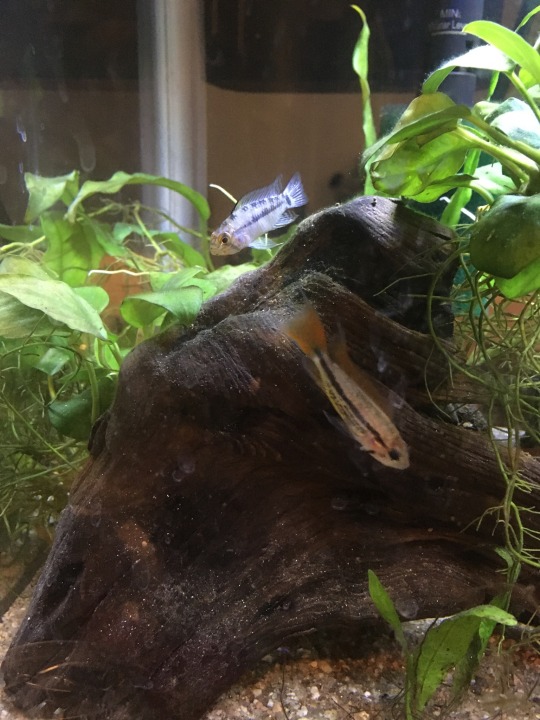

Introducing Tangerine! (ft. Blue Boy in the background)
These two are finally getting along. It seemed like there was gonna be some aggression at first, but they and the guppies are doing great in the 10g.
There may be bigger things in store in the future...
#fishblr#fishkeeping#apisto#apistogramma blue steel#apistogramma orange flash#cockatoo dwarf cichlid#steel blue dwarf cichlid#tangerine’s a showoff and likes to push everyone around#on the other hand blue boy is kinda shy seeing him is like seeing a unicorn#I get all excited#also... I’ve got a 55g waiting in the wings#we’ll just have to see what happens with that
12 notes
·
View notes
Text
They’re Apistogramma Cacatuoides, also called Cockatoo Dwarf Cichlids! They’re surprisingly peaceful for cichlids (mine are even less aggressive than my kribensis cichlids lol). They’re hard to find in some areas, but if you can get your hands on some, I definitely recommend them. They’re absolutely gorgeous and have great personalities.

I can’t believe these two were the same size when I got them. Agni got huge. Little babies all grown up
49 notes
·
View notes
Photo

New fish - Cockatoo Dwarf Cichlid (apistogramma cacatuoides) 🔥 #kylesaquarium #aquarium #aquariums #aquascape #plantedaquarium #cichlid #apistogramma #apistogrammacacatuoides https://www.instagram.com/p/B3Kc3WeJTTT/?igshid=15rmdm7322mtf
#kylesaquarium#aquarium#aquariums#aquascape#plantedaquarium#cichlid#apistogramma#apistogrammacacatuoides
0 notes
Video
Looking for a smaller sized dwarf #cichlid that does well in a planted community tank? An #Apistogramma is a great choice and the Cockatoo Cichlid is a great choice, especially the Orange Flash variation. Available at petzonesd.com or in-store here at our Convoy District store. (at Pet Zone Tropical Fish - Kearny Mesa, San Diego, CA) https://www.instagram.com/p/BnrNa4gn-aH/?utm_source=ig_tumblr_share&igshid=1n5x88fos5qdl
0 notes
Text
Love me some cockatoo dwarf cichlids 👌
New article on Aquariadise: South American cichlids! 🐟
Who knew such dark waters could harbor such colorful creatures? 😍
I adore the many South American cichlid species so it was about time for an article. I partnered up with @iantojonesthebetta to create this article discussing 6 of our favorite colorful South American cichlid species that are suitable for beginners!
Read the full article on Aquariadise here.

QUIZ: which species is pictured here? 😉
32 notes
·
View notes
Text
A Comprehensive Listing of the Various CICHLID TYPES
A lot of people have been asking me lately about the different cichlid types so I thought I would compile a bit of a thorough list in regards to the various species.
Cichlid (sik-a-lid) fish stem from what's known as the Cichlidae (sik-li-day) family. The Cichlidae family is an extremely large & diverse family having nearly 2000 specimens described and it's believed the still much more to be described scientifically.
Different Mbuna from Lake Malawi (Photo credit: Wikipedia)
They would have to be the largest family of vertebrates.
Due to the fact that we are constantly finding new species types, estimating the exact number of cichlid types is very hard to do.
These fish come in some of the strangest looking shapes to the most breathtaking colors and throw in some peculiar mannerisms and it makes for quite the character.
Cichlids are found all across the globe ranging from Africa throughout Asia to North and South America.
Cichlid fish which tend to be kept in captivation can come from the African waters as well as the Amazon basin area and also from some the famous lakes like Lake Malawi, Great African Rift Lake and Lake Tanganyika.
Presently there is a massive diversity in the behavior and eating habits of these fish because of the greater number of types.
The majority of cichlid types are herbivorous fishes and feed on vegetation or even algae. The other cichlid varieties are generally omnivorous, will eat anything or they are carnivorous fishes that live on other fish & insects.
The broad range of eating habits has really allowed cichlid fish to occupy numerous habitats. Cichlid fish do not survive in salt water although funnily enough, their ancestors did.
Most cichlid kinds are fairly scaled down in size and many of them tend to be referred to as game types.
This has lead to several different cichlid species being farmed for human consumption. On the flip side, we can't deny a number of fish tank enthusiasts that enjoy cichlid species because of their eye-catching colorings and tendencies.
Angelfish, Oscar fish, Discus fish and Convict cichlid are among the most popular with aquarium enthusiasts.
African Cichlid Species
Most of the Cichlid types that we see in captivity today come from the African Amazonian regions. So on with the listings!
Lake Malawi
Lake Malawi is one of the largest lakes known to man and is home to over 300 varieties of cichlid fish. Some of the well-known African species are:
* Big-lipped
* Moori or Blue Dolphin
* Malawi Eye-biter
* Linni or Elephant-nose Cichlid
* Livingstoni
* Polystigma
* Venustus
* Deep-Water Haplo
* Electric Blue Haplo
Mbuna Cichlids
* Red-dorsal Afra, Dogtooth
* Fuelleborn's, Fuelleborni
* Trewavas, Red-finned
* Electric Yellow Mbuna, Lion's Cove Yellow
* Malawi Golden
* Johann's Mbuna
* Parallel-striped Mbuna
* Purple Mbuna
* Aurora
* Bumblebee Mbuna or Hornet
* Elongatus, Slender Mbuna
* Snail Shell Mbuna
* Kennyi
* Eduard's Mbuna
* Zebra Mbuna, Zebra Malawi, Cobalt Blue or Nyasa Blue
Peacock Group
* Baensch's Peacock, Yellow Peacock or Sunshine Peacock
* Red Shoulder Malawi Peacock
* Lake Malawi Butterfly
Lake Tanganyika
* Pearly Compressiceps
* Compressiceps
* Frontosa
* Black-finned Slender
* Striped Clown Goby, Striped Goby, Tanganyika Clown
* Dickfeld's Juli
* Checkerboard Julie
* Golden Julie or Ornate Julie
* Regan's Julie or Striped Julie
* Masked Julie or Black-and-White Julie
* Fairy
* Daffodil Brichardi
* Lemon
* Elongated Lemon
* Ocellated Shell-dweller
* Pearl-lined Lamprologus
* Five-bar
* Otostigma, Tripod
* Blue-eyed Tropheus
* Duboisi
* Blunt-headed
* Poll's Tropheus
* Aulonocara
* Lamprichthys
* Synodontis
* Afromastacembelus
Cavity Brooder s
* Altolamprologus
* Lamprologus
* Julidochromis
* Neolamprologus
Mouth Brooder Group of s
* Cyphotilapia
* Cyprichromis
* Eretmodus
* Tropheus
* Xenotilapia
Other African Species
* African Butterfly
* Zebra Haplochromis
* Two-spotted Jewel
* Blood-red Jewel
* Purple or the Common Krib
* African Blockhead or Lumphead
* Zebra Tilapia
* Clown Tilapia
North American Species
* Firemouth
* Convict
* Pearlscale
* Texas
* Midas
* Large Lipped
* Long Fin
* Friedrichsthali
* Jaguar
* Jack Dempsy
* Salvin's or Tricolor
* Red-spotted
* Black Belt
* Nicaragua
* Quetzal or Red-headed
South American Species
* Oscar fish or Velvet
* Peacock Bass
* Festa's
* Port Acara or Black Acara
* Pike
* Banded
* Festive
Acaras
* Blue Acara
* Green Terror or Rivulatus
* Saddle or Two-spot Acara
* Keyhole
* Flag Acara
* Golden Dwarf
New World Dwarfs
* Agassiz's Dwarf
* Yellow Dwarf
* Cockatoo Dwarf
* Three-Stripe Dwarf
* Ramirez' Dwarf
Angel Species
* Angelfish
* Altum Angelfish
Discus Species
* Brown Discus Fish
* Green Discus
* Royal Blue Discus
* Heckle Discus or Pompadour Fish
* Waroo or Triangle
Eartheater Cichlids Species
* Cupid
* Pearl or Mother-of-Pearl Eartheater
* Red hump Eartheater
* Paraguay Mouthbrooder
* Demon Fish.
By Simon G Edwards Article Source: EzineArticles
amzn_assoc_placement = "adunit0"; amzn_assoc_search_bar = "false"; amzn_assoc_tracking_id = "dogandcatatho-20"; amzn_assoc_ad_mode = "search"; amzn_assoc_ad_type = "smart"; amzn_assoc_marketplace = "amazon"; amzn_assoc_region = "US"; amzn_assoc_title = "Related Products"; amzn_assoc_default_search_phrase = "cichlids"; amzn_assoc_default_category = "Books"; amzn_assoc_linkid = "1b9d68c5a1afccf148d0225398659020"; amzn_assoc_rows = "1"; amzn_assoc_default_browse_node = "283155";
0 notes
